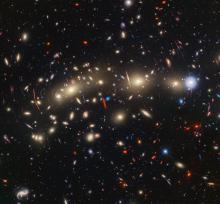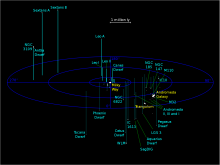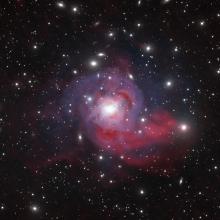Listen to today's episode of StarDate on the web the same day it airs in high-quality streaming audio without any extra ads or announcements. Choose a $8 one-month pass, or listen every day for a year for just $30.
You are here
Local Group II
The Milky Way is like a high-ranking politician or a popular music star: it travels with a big entourage. Astronomers have discovered about four dozen possible companion galaxies. A couple of them are visible to the unaided eye, but most are quite small and faint.
The Milky Way and its entourage are all members of the Local Group — dozens of galaxies that are bound by their mutual gravitational pull. The Milky Way and another big spiral, the Andromeda galaxy, are its largest members.
The Milky Way’s most prominent satellites are the Large and Small Magellanic Clouds. Each contains several billion stars, plus lots of gas for making more stars. From southern skies, they’re visible to the eye as small, glowing clouds.
Most of the Milky Way’s other satellites are much smaller. In fact, the smallest contain only a few thousand stars.
Although a few of these satellites have been known for a while, most were discovered only in the last few years. These late discoveries are quite faint, so you have to look carefully to see them. And a few others have been hidden behind clouds of stars or dust in the Milky Way.
Some of these little guys are being pulled apart by the Milky Way, which is taking their stars and gas for itself — a fate that’s probably befallen many other small satellites during the galaxy’s long lifetime.
A recently discovered satellite suggests that there could be many more of them out there even now. More about that tomorrow.
Script by Damond Benningfield





